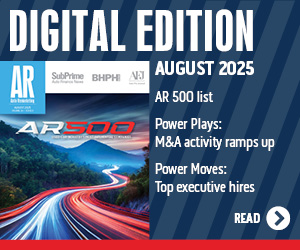Stores that are a part of Larry H. Miller Dealerships in Colorado are joining with Denver’s 9NEWS and the Volunteers of America (VOA) for the 14th annual “Stuff for Students” school supply drive.
During the entire month of August, officials highlighted the seven Larry H. Miller Dealership locations statewide will be collecting essential school supply items, including:
— Backpacks
— Pens and pencils
— Filler paper
— Two-pocket folders
— Spiral notebooks
— Crayons and colored markers
— Glue sticks
— Scissors
— Rulers and protractors/compasses
— Composition books
— Water color sketch pads.
VOA indicated that it will sort the donated supplies and distribute them to more than 15 Colorado school districts based on the percentage of free/reduced lunch students.
“We’ve made it our mission to enrich the lives of our customers, employees and community,” said Ray Reilly, senior vice president of operations for Larry H. Miller Dealerships. “Providing children with the tools they need to start the school year off right through the ‘Stuff for Students’ program is an example of this commitment.”
The dealer group mentioned “Stuff for Students” collection bins will be located at these stores:
— Boulder at Larry H. Miller Toyota
— Colorado Springs at Larry H. Miller Liberty Toyota and Larry H. Miller Toyota
— Lakewood at Larry H. Miller Volkswagen and Larry H. Miller Ford
— Highlands Ranch at Larry H. Miller Nissan
— Thornton at Larry H. Miller Chrysler Dodge Jeep Ram 104th.
Officials calculated the cost for basic school supplies for one student each year is $161.27 for elementary school, $198 for middle school and $893 for high school students. According to Denver Public Schools, there are more than 2,000 homeless students in Denver along with more than 60,000 on free and reduced lunches.
“With Colorado schools facing unprecedented budget cuts and the number of Colorado children living in poverty continuing to grow, more and more students are starting school without the necessary tools to succeed,” said Bradley Gulley, VOA director of volunteer programs.
“Having Larry H. Miller Dealerships as a partner this year is a huge blessing,” Gulley continued. “We will be able to reach out to more school districts and will collect a greater amount of supplies to help additional students. Supporting our local students makes our communities stronger.”
Volunteers of America works directly with the school districts to distribute the “Stuff for Students” supplies, including:
— Adams 12
— Adams 14
— Adams 50 (Westminster)
— Aurora Public Schools
— Boulder Valley & St. Vrain School Districts
— Brighton Public Schools
— Cherry Creek Public Schools
— Denver Public Schools
— Douglas County Schools
— Elizabeth Public Schools
— Englewood Public Schools
— Jefferson Public Schools
— Littleton Public Schools
— Sheridan Public Schools
— Colorado Springs School District 11
In addition to participating in “Stuff for Students,” employees of Larry H. Miller Dealerships in Colorado have recently been active volunteers in their local communities. Beneficiaries of their assistance include:
— Boulder Humane Society
— Littleton's Shiloh Center
— Lakewood's Action House
— AspenPointe Community Garden
— Marian House Kidz Kloset in Colorado Springs
— Thornton's Carpenter Park and Amphitheater
Larry H. Miller Charities also supports Colorado-based programs by awarding grants to several community organizations that work with youth. The most recent donations were presented to Open Door Youth Gang Alternatives and Swansea Elementary in Denver and Colorado Springs' TESSA Safehouse, which also received a check from Toyota Motor Sales USA.
For store locations, visit www.lhmauto.com. In addition, VOA is accepting monetary donations at www.voacolorado.org/news_and_events/stuff-for-students to purchase additional school supplies following the drive.
Penske Automotive Group announced Wednesday it just concluded the best quarter and six months in company history.
Second-quarter revenue was up 12.3 percent to $4.9 billion, while year-to-date revenue soared by 11.8 percent to come in at $9.4 billion. The company explained this revenue spike was driven by a 7.1-percent increase in retail auto sales, including a 6.1-percent bump on a same-store basis.
And overall gross profit for Q2 improved 11.4 percent to $729.6 million, while operating income increased 17.2 percent to $159.1 million.
"We just completed the best quarter and six-month period in the history of our company," said chairman Roger Penske. "The performance of our business continues to demonstrate the flexibility and resiliency of the company's brand mix and business model. The record second quarter results were driven by a 7.5-percent increase in retail automotive unit sales, a 50-basis point increase in automotive retail service and parts gross margin and a reduction of 110 basis points in selling, general and administrative expenses as a percent of gross profit."
As Penske said, much of the quarterly and 6-month success was due to an impressive automotive retail performance.
Total retail unit sales were up by 7.5 percent to 108,288, and numbers were up 3.3 percent in the U.S., in particular.
Taking a look at the company’s used performance, overall used retail sales were up 8.8 percent, for a total of 58,758 used retail vehicles sold in Q2. And year-to-date the company has sold 112,051 used retail vehicles, up from 105,262 sold during the first half of 2014.
Used retail revenue was on the way up, as well, accounting for 30.3 percent of the total retail automotive revenue mix. In Q2, Penske’s retail revenue for used vehicles came in at $1.4 billion, up from $1.3 billion during the same quarter of 2014. The company has brought in $2.7 billion in revenue from used vehicles retailed so far this year.
Taking a look at gross profit, used retail vehicles brought in $88 million in Q2, down slightly from the $89.8 million earned in Q2 of 2014. Numbers are down a bit year-to-date, as well; used retail gross profit is at $172.5 million so far this year, down from $176.3 secured in the first half of 2014. Used retail vehicle gross profit accounted for 13.3 percent of the total retail automotive gross profit mix.
Here are a few more used stats for the quarter:
- Revenue per used vehicle retailed came in at $27,771, which is down 0.2 percent year-over-year.
- Gross profit for used vehicle retailed for Q2 came in at an average of $1,777, down $197 year-over-year for a gross margin of 6.4 percent.
- Same-store used retail revenue increased by 8.2 percent.
On top of successful quarter for retail sales, company management also shared a 50-basis point increase in automotive retail service and parts gross margin worked to boost performance.
The service and parts business brought in $121.9 million in gross profit during the second quarter, up from $111.9 in Q2 2014. So far this year, service and parts make up $233 million in gross profit, up from $216.4 notched during the first six months of last year.
The service and parts business made up 41.4 percent of the retail automotive gross profit mix for the company in Q2, up from 40.7 percent during the same period of 2014.
Editor’s Note: For a more in-depth look into Penske’s Q2 performance, see upcoming AR Today newsletters.
Calling the integration of DCH Auto “ahead of expectations,” Lithia Motors modified its earnings guidance and hinted at where the dealer group might expand next because of the successes of bringing those other 27 stores into its portfolio.
Lithia chief executive officer Bryan DeBoer acknowledged that the company originally expected to realize synergies from the DCH acquisition during a two-year transition phase. During the company’s recent conference call to highlight its second-quarter financial and sales report, DeBoer touched on how much quicker that deal enhanced Lithia’s performance.
“The ability of DCH's team to drive change has allowed us to accelerate the process of realizing these savings and is now mostly complete,” DeBoer said. “Despite the realized corporate synergies, many opportunities remain for continued organic growth.
“Clear and transparent performance expectations allows our leadership to continue to drive results towards industry leading benchmarks,” he continued. “The performance of Lithia and DCH stores have allowed us to increase our guidance.”
Lithia now is projecting that its third-quarter earnings will improve from $1.83 to $1.87 per diluted share and full-year earnings will tick up from $6.63 to $6.72 per diluted share. Both projections are based on the following annual assumptions:
— Total revenues of $7.6 to $7.8 billion
— New-vehicle sales increasing 45.0 percent
— New-vehicle gross margin of 5.9 percent to 6.1 percent
— Used vehicle sales increasing 40.0 percent
— Used vehicle gross margin of 12.6 percent to 12.8 percent
— Service body and parts sales increasing 42.0 percent
— Service body and parts gross margin of 48.8 percent to 49.2 percent
After articulating the earnings projections, DeBoer reflected on what the company has “learned” since DCH came into the fold last year.
“The DCH acquisition really taught us that as a management team we have built an autonomous type of company that the top level is there to really inspire and challenge and set clear expectations for the divisions,” he said. “So I think in terms of the perspective of acquisitions, we believe that our staple diet of one and two acquisition-type of dealerships, we still always continue.
“However, the idea of larger groups is something that will be much more simple and easier to integrate in the future especially now knowing that we can grow in both metro markets as well as in our typical exclusive markets,” DeBoer continued.
So could the Lithia footprint reach the Big Apple or the City of Angels? DeBoer didn’t seem to be ruling out the possibility and potentially “play a little bit of our previous expectations.”
He added, “I think the biggest thing that we have with DCH at this stage is the ability to open up that second door in the metro markets for growth. The ability for us to leverage their people which are very stable, they were very progressive, they are inventive, is exciting for us.
“We are looking in both metropolitan areas as well as our typical exclusive areas,” DeBoer went on to say. “I would say that our closest deals are the traditional exclusive deals. However, we have a good handful of deals that are percolating in both the LA and the New York markets, and we look forward to announcing in the coming quarters our first deal on the DCH side.”
DeBoer closed the topic by noting Lithia’s typically acquired stores that management believed to be generating average sales or perhaps even underperforming. Once acquired, DeBoer reiterated that the dealership is filled with Lithia employees who have a track record of doing well.
“We have always said that people drive the performance in stores,” DeBoer said. “We believe if the store and the franchises are the right franchises for the area, then it's a matter of bringing in new talent, and we can realize the synergies and the advantages that maybe have not been realized.”
The National Automobile Dealers Association announced today its fierce opposition of an amendment potentially headed for the Senate floor this week that would prohibit the retail sale of used vehicles with an open recall.
The NADA as well as the American International Automobile Dealers Association and the National Association of Minority Automobile Dealers sent a joint letter to their senators on Monday to urge them to vote against the proposed amendment.
According to the NADA, the amendment in question was officially filed by Sen. Richard Blumenthal (D-Conn.) and may come to the Senate floor for a vote as part of the transportation bill being voted on this Thursday.
In the letter, the three organizations argued that the proposed legislation would “instantly diminish the value of millions of customer trade-ins while not guaranteeing that a single recalled vehicle gets fixed.”
The organizations speculate that dealers would be less likely to accept trade-in offers due to the knowledge that they would have to sit around until a recall remedy could be found, thus causing many trade-ins to be declined and forcing consumers to sell their vehicles in the private market and further perpetuate the putting off of recall repairs.
The organizations estimate that between 250,000 and 500,000 sales of new vehicles would be lost per year due to consumers being unable to trade in their vehicle.
In a previous discussion with Auto Remarketing, vAuto founder Dale Pollak echoed this opinion.
“The responsibility of checking and remedying open recalls for all used vehicles prior to sale is an excessive and unreasonable burden to dealers,” Pollak said. “This is because dealers frequently do not possess the resources, expertise and/or parts to make the necessary repairs. Moreover, this situation is exacerbated in light of the fact that dealers cannot practically refuse trade-ins on the purchase of new vehicles.
“These trades represent a significant portion of the customer’s payment, and therefore, the receiving dealer must have the ability to turn the trade quickly in order to convert the asset to cash,” Pollak continued. “The inability to do so as a result of the proposed legislation will likely deny all dealers the necessary capital to sustain operations.”
To check out the full letter submitted by NADA, AIADA and NAMAD to their senators, click here. To check out commentary on the topic from NADA Chairman Bill Fox, click here.
Sonic Automotive’s board of directors announced Monday the shifting of several executive-level positions within the company, including a new chief executive officer.
Taking on the role of CEO for the group is Scott Smith, complementing his other roles.
Bruton Smith was also named as an executive chairman. David Smith will continue to serve as Sonic’s vice chairman.
Bruton Smith served as the company’s chairman and CEO since its public offering began in 1997 until today.
In the expanded role, Scott Smith, who has served as the company’s president and chief strategic officer since 2007 when he helped co-found Sonic, will work with the executive chairman, the vice chairman, executive management and the board of directors to develop the company’s strategic direction along with leading day-to-day operations and communicating with key stakeholders in the company.
As executive chairman, Bruton Smith will report directly to the board of directors while working closely with the CEO and vice chairman to engage in overall leadership and strategic direction of the company, guiding senior management, coordinating activities of the board of directors and communicating with stakeholders.
For more information about Sonic Automotive, visit its site here.
Group 1 Automotive’s second quarter, from the perspective of used vehicles retailed in the United States, was solid.
Overall unit sales were up 18.2 percent. Revenue and gross profit were up on an overall used-vehicle retail basis, as well.
But there was at least one retail used-vehicle metric that the dealer group’s president and chief executive officer, Earl J. Hesterberg, was not satisfied – the gross margins. Looking at worldwide data for the second quarter, used-vehicle retail sales gross margin percentages were down from 7.9 percent in 2014 to 6.8 percent this year. There was a similar result in the U.S., where margins by the same metric were down from 8.2 percent to 7 percent.
“I’m not exactly sure how you should model it, but I do think it was one of our weaker areas of performance in the quarter,” Hesterberg said. “I don’t think we did a good job. We’ve had 23 days to work on this so we spent a lot of time on it and my impression is that with the improved availability of used vehicles, that we bought a little heavy and also that in some of our oil-challenged markets that there may have been a little bit of shift from new to used, and I think we had too many cars for the quarter.”
Hesterberg noted that although the margins aren’t where he’d like them to be, he was still satisfied with his dealers’ ability to offload vehicles in a timely nature.
“You’ll note from our inventory level – 32 days’ supply – we don’t hold onto these things,” Hesterberg said. “We have a discipline that encourages our people to liquidate these things one way or another and keep our inventory in mind. So we retailed far too many cars at a low margin during the quarter compared to what we should normally do. But it leverages our F&I business, it gives us money to the bottom line, and you can see that we have some pretty powerful throughput.
“That’s something that we’re going to work to move up a bit,” he continued. “I’ve learned not to forecast margins because I’m not very good at that. The market dictates a lot of that. So I think we can do a better job there. I wasn’t particularly impressed with our margin result. I was impressed with our volume result.”
For more details on Group 1’s U.S. used-vehicle results reported on Friday, check them out here.
Chances are, before the last week, you hadn’t heard about The Appraisal Lane. That was on purpose.
Two years in the making, The Appraisal Lane (TAL), a real-time trade network and communication platform for used vehicles designed to conveniently fill the dealer-to-dealer niche with a mobile-friendly solution to provide quick cash offers on vehicles, has been working slowly to build not only its internal team, but also its clientele.
At its core, dealers and auctions can utilize TAL in three different ways:
- Submit vehicles for appraisal. Whether those are pending trade-ins, stubborn vehicles on the lot that are proving to be a tough sell, cars that didn’t sell on the auction block, or anything in between. Depending on the situation, TAL will respond with a cash offer within 10 to 15 minutes. Many times, those cash offers stem from outside buyers, which typically include dealer or auction partners.
- Buying cars. TAL has partnerships with many dealerships and a handful of auctions, some of which only utilize TAL services to buy inventory.
- White label customers. Dealerships or dealer groups seeking to utilize the TAL platform to power their own internal trade network can license a solution from TAL.
It all started with an idea between friends. Jeff Risner, Andrew Iorgulescu, Chris Tomchay and Scott Gales all co-founded TAL. If you think those names sound familiar, you’re probably right.
Risner, TAL’s president, and Tomchay, TAL’s chief operations officer, are college buddies who have worked together for going on 30 years. Together they currently co-own the Georgia-Carolina Auto Auction. Risner was also a founding associate at CarMax.
Iorgulescu, a co-founder of OPENLANE, has worked with the other TAL co-founders over the years and maintained a friendship that sprouted the idea for The Auction Lane.
“While Jeff was on the dealer advisory council at OPENLANE, Jeff used to come to me a lot at night and say, ‘Andrew, what we need to build is a ‘send check’ button for a dealer,’” Iorgulescu said. “And I would say, ‘I don’t know, Jeff.’”
But over time, Risner remained adamant and insistent that the idea — of offering an easy-to-access and quick, solid offer on cars — would be a concrete platform for a business.
So two years ago, the four got together and began working on the technology the system would be built on. In February and March of this year, TAL began testing the waters by putting beta dealers on the system, which ran through the summer. At that point, they launched the finished product as it is today.
As of right now, TAL’s buying and selling services are available in the Southeast and Texas, where the company’s founders rolled out initially due to their significant dealer, auction and transportation connections in the area. Iorgulescu also says that within the last week the company has launched operations in the Northeast and aims at hitting the Midwestern states next.
TAL’s white label solutions are available nationwide.
But there’s no timeline in place, however, for the company’s physical expansion. The company’s president made it clear that although its system is designed for international application it will take as long as it takes to build solid relationships with other companies and individuals in the business who TAL feels shares the same business ideals that they do.
“We’re trying to build a select group of folks,” Iorgulescu said. “It’s a community.”
“The response has been very positive from the dealer community,” Iorgulescu later continued. “We could be a lot bigger today, we could be signing up dealers left and right and center, but we’re very methodical about how we’re going to build this business because we’ve all done it before.”
Like many forms of technology today, words can only get you so far to take you toward an understanding of a system’s applications. To check out the full details of The Appraisal Lane or to get in contact with their team to request a demonstration, visit the TAL site here.
For more information about the company and more insight from the company’s team of industry veterans, stay tuned for future editions of Auto Remarketing where we will delve further.
As used-vehicle retail same-store sales increased 16 percent year-over-year during the second quarter, Lithia Motors reported on Wednesday that gross profit on those retailed used units softened by 7.3 percent.
Nonetheless, Lithia generated adjusted net income of $49.4 million in Q2; the highest quarterly net income in company history and a 40-percent increase over the prior year period.
The dealer group’s adjusted net income came in at $1.86 per diluted share. This figure compares to last year’s second quarter adjusted net income from continuing operations of $35.2 million, or $1.34 per diluted share.
The company also highlighted Q2 total revenue from continuing operations increased $775 million, or 63 percent, to $2.0 billion, up from $1.2 billion for the second quarter of last year.
A few other noteworthy achievement from Lithia’s second quarter included:
— Total same store sales increased 11 percent.
— New-vehicle same-store sales increased 8 percent.
— Service, body and parts same store sales increased 10 percent.
— Same store F&I per unit increased $78 to $1,280.
— Adjusted SG&A expense as a percentage of gross profit was 66.6 percent.
“Our store leaders remain focused on continuing to capture more new vehicle market share, increasing used vehicle unit volume and growing service revenue while providing an exceptional customer experience,” Lithia president and chief executive officer Bryan DeBoer said.
“Within both DCH and Lithia, many opportunities remain to improve store performance and to find accretive acquisitions,” DeBoer continued.
The stores already within the company portfolio turned 24,689 used vehicles in Q2. Thanks to those DCH stores in the fold, that amount represented a 53.5 percent lift from a year earlier as the company delivered 8,603 more used models.
That turn performance helped Lithia to overcome a $200 dip year-over-year in gross profit per retailed used vehicle. That Q2 figure came in at $2,539.
Also of note in the used department, Lithia wholesaled 3.4 percent less vehicles in the second quarter, sending 7,077 units the wholesale market.
Turning over to company metrics through the first six months of 2015, Lithia reported that revenue from continuing operations increased 65 percent to $3.8 billion, up from $2.3 billion at the midpoint of 2014.
Through two quarters, the group’s adjusted net income per diluted share increased 38 percent to $3.26, up from $2.36. Unadjusted net income from continuing operations was $3.47 per diluted share for the first six months of 2015, compared to $2.27 per diluted share for the first six months of 2014.
Lithia senior vice president and chief financial officer Chris Holzshu pointed out the company’s adjusted SG&A as a percentage of gross profit was 66.6 percent in the second quarter, bringing the first half of the year down to 68.8 percent.
“DCH has been able to reduce selling costs more quickly than we anticipated,” Holzshu said. “As we continue to integrate operations, we are targeting consolidated SG&A as a percentage of gross profit in the mid-60s on a full year basis.
“Additionally, same store F&I per unit was $1,280 per unit, an increase of $78 over the prior year and the best result in company history,” he continued. “We still believe opportunity remains to improve this number given continued focus by our store personnel.”
Editor’s note: For more reaction from Lithia executives about their latest quarterly performance, watch for a report in an upcoming edition of Auto Remarketing Today.
Sonic Automotive management reiterated the four steps it wants to maintain that’s associated with One Sonic-One Experience, the company’s stand-alone pre-owned model. The strategy has been gradually rolled out since last summer, and the dealer group anticipates that it will be in place at about 40 of its 127 stores by the end of the year.
The four steps to executing the One Sonic-One Experience that the company spelled out again this week when it reported its second-quarter performance included:
1. Continue to focus on inventory management and pricing.
2. OSOE stores continue to improve across all areas of our business.
3. Continue to learn and have excellent CSI and guest feedback.
4. Begin rollout of technology – CRM, desking tool and appraisal tool — effective Aug. 1 to give stores access to this technology.
Sonic’s executive vice president of operations Jeff Dyke explained how the implementation has pushed the market in the dealer group’s backyard to a level that’s outperforming other footprints the group has. But when the strategy is leveraged in other places beyond just Charlotte, N.C., Dyke indicated Sonic plans some adjustments.
“When we first rolled out in Charlotte, we rolled everything out at one time, and we learned that you don’t want to roll everything out at one time. It’s like drinking from the fire hydrant,” Dyke said. “So, we’re now just doing the same thing, but just doing it in pieces and giving our stores the opportunity to use the technology we’ve developed.
“The technology is just fantastic, and so we’ve gotten a lot of requests for it. Actually we’ve even gotten a request outside of our company for it,” he continued. “We’re going to go slowly over the next — between now and the end of next year — to roll those three pieces out — our CRM, our desking and our appraisal tool — and then let the Charlotte market sort of catch up and see how it’s doing.”
Dyke anticipated that Sonic is going to be in “pretty good shape” by the end of next year with respect to the implementation of One Sonic-One Experience, which leverages the technological capability of an iPad and a trained employee to finalize a transaction from lead to delivery.
“Our market share is really starting to grow and so is profitability, so we’ll see how those things work,” Dyke said. “As we get better and better at executing in Charlotte, then we’ll pick some markets to roll the balance of the One Sonic-One Experience process out.”
Dyke also mentioned Sonic’s performance in its hometown isn’t just because of the One Sonic-One Experience.
“The Charlotte market is outperforming the rest of the company,” he said. “A lot of that is just because the new-car volumes are increasing, and we’re taking more trades. When you take more trades, you sell more cars. And so that’s part of it.
“The other part is we’re executing our play books and doing the things that we need to do in those stores,” he added. “As you can imagine, a lot of training and a lot of attention is going on. So, we expect some kind of lift.”
Recall work
Sonic has 15 Honda stores in its portfolio. That’s meant the service bays have stayed busy in light of so many Honda models being recalled because of defective Takata airbags. Dyke shared how those dealerships are handling that extra work along with the regular flow into the service drive.
“Actually what we’re doing is we’re pushing all the reconditioning hours into the evening and running double shifts, especially with Honda and BMW,” Dyke said. “We’re constrained in some cases from a facility perspective. We have worked really hard this year to hire a net gain of 206 technicians for the company.
“There has been constraint from both sides, but warranty business in particular at Honda with airbag recalls is just crazy,” he continued. “We’ve got this coming from every which direction. Whether we try to get them to set an appointment or they are just driving up, our shops are really, really full.
“We’re doing our best to also take the opportunity to review our guest needs and up-sell if there is an opportunity there, but it eats up the shop hours,” Dyke went on to say. “We really had to adjust those shop hours to deal with that. We have big Honda stores across the country, and it’s taking a lot of work to put us in a position to be able to deal with it.”
Storm damage
Two major series of thunderstorms struck the Denver area in late May and early June, leaving Sonic dealerships with close to 1,000 damaged vehicles. Multiple media reports indicated the storms produced hailstones as large as tennis balls in some areas.
The storms impacted Sonic’s Toyota, Chevrolet, Mercedes-Benz and BMW dealerships in the market, but Dyke noted the company’s EchoPark Automotive rooftops avoided damage.
“We got them all fixed. Then about 10 days later, we got another hailstorm and damaged the cars all over again,” Dyke said. “It was just the comedy of weather errors there. Hopefully that’s behind us and we don’t have to deal that anymore.”
AutoNation hosted its second quarterly conference call of the year on Wednesday, outlining its gains in several metrics.
The dealer group’s retail used-vehicle unit sales increased by 9 percent overall in the second quarter, jumping from 52,656 units in Q2 2014 to 57,370 units in Q2 2015.
Judging the same metric for the first half of the year, AutoNation has retailed 115,994 used-vehicle units overall in the first six months of 2015, a 10.7 percent jump from last year’s figure of 104,792.
Overall used-vehicle retail revenue for this year’s Q2 came in at roughly $1.1 billion, a 12.1 percent increase over last year’s second quarter overall result of roughly $989.1 million.
Overall gross profit was also up slightly for used units retailed by AutoNation in the second quarter, up 3 percent year-over-year and coming in at a total of $91.4 million for Q2 2015.
Mike Jackson, AutoNation’s chairman, chief executive officer and president, highlighted other details of the company’s achievements, including its 19th consecutive quarter of double-digit year-over-year growth in earnings per share as well as its continued belief that over 17 million new vehicles will be retailed in the United States this year.
“We are pleased with how the AutoNation brand has been embraced, as well as the continued rollout of AutoNation Express and the progress of all our digital initiatives,” Jackson said. “Over 20 percent of our sales were generated through AutoNation websites for the first half of the year. The first phase of AutoNation Express, where a consumer can identify a vehicle, reserve that vehicle and put a deposit on that vehicle, was completed six months ahead of schedule. AutoNation is committed to providing transparency and delivering a peerless customer experience through initiatives such as AutoNation Express."
For a complete view of AutoNation’s second quarter results, click here.
Jackson addresses TrueCar matter
During the conference call, Jackson also provided his own explanation for why AutoNation and TrueCar went their separate ways, mentioning that TrueCar previously generated 3 percent of the dealer group's leads.
"We were operating under a contract that had acceptable terms," Jackson said. "That contract expired at the end of February, beginning of March. TrueCar had demanded in the new contract that we give them all our customer information. In (the) old contract, we gave TrueCar no customer information. This is an unprecedented demand.
"I don't know what company gives 100 percent of their customer information," Jackson continued. "I think it also, if we said yes, definitely would have created privacy issues that would have been cumbersome for us to implement."
Jackson went on to say that he believes his company's brand is strong enough to push forward without the leads generated by TrueCar.
"We think our brand is strong enough, our digital capabilities are strong enough that we will be fine," Jackson said. "And TrueCar is now in our rearview mirror."












